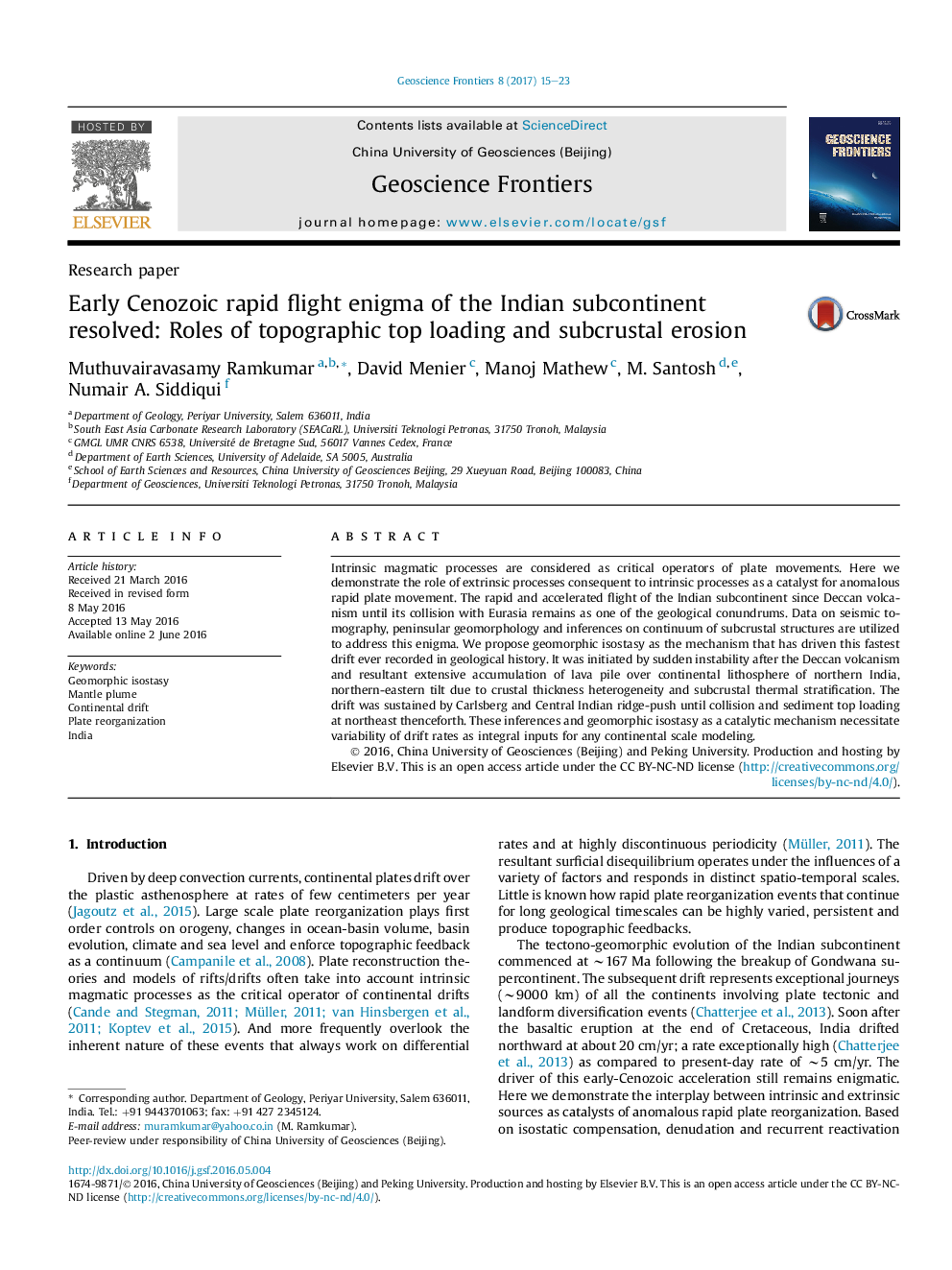| Article ID | Journal | Published Year | Pages | File Type |
|---|---|---|---|---|
| 5780285 | Geoscience Frontiers | 2017 | 9 Pages |
â¢New explanation for unusual drift of Indian Plate immediately after the Deccan volcanism.â¢Tectonic continuum, landscape evolution and macrogeomorphic contrasts of Indian continental margins.â¢Idealistic model explaining the progressive subcrustal erosion.
Intrinsic magmatic processes are considered as critical operators of plate movements. Here we demonstrate the role of extrinsic processes consequent to intrinsic processes as a catalyst for anomalous rapid plate movement. The rapid and accelerated flight of the Indian subcontinent since Deccan volcanism until its collision with Eurasia remains as one of the geological conundrums. Data on seismic tomography, peninsular geomorphology and inferences on continuum of subcrustal structures are utilized to address this enigma. We propose geomorphic isostasy as the mechanism that has driven this fastest drift ever recorded in geological history. It was initiated by sudden instability after the Deccan volcanism and resultant extensive accumulation of lava pile over continental lithosphere of northern India, northern-eastern tilt due to crustal thickness heterogeneity and subcrustal thermal stratification. The drift was sustained by Carlsberg and Central Indian ridge-push until collision and sediment top loading at northeast thenceforth. These inferences and geomorphic isostasy as a catalytic mechanism necessitate variability of drift rates as integral inputs for any continental scale modeling.
Graphical abstractDownload high-res image (695KB)Download full-size image
